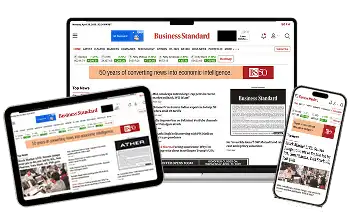Valuations had turned attractive in June. There were even inklings of a massive selling by foreign investors winding down. VINIT SAMBRE, head-equities, DSP Investment Managers, in conversation with Samie Modak, says as inflationary pressures unbind, corporate earnings growth will draw level. Edited excerpts:
The benchmark indices have bounced nearly 15 per cent from June lows. What has led to this reversal in sentiment?
In June, valuations had turned reasonable and fears associated with the US Federal Reserve tightening had been priced in.
India has favourable macros, compared to other emerging markets, and the turn in sentiment was legitimate.
The sentiment is likely to remain buoyant since there is a case for monetary tightening enduring for a much shorter time than was previously anticipated.
Are fresh market highs doable?
We are not trying to predict levels. The idea is to invest where there is opportunity. Markets may remain sideways, but there will be an opportunity in select sectors. We will use that to shape our resilient portfolios.
How has the first quarter of 2022-23 (FY23) earnings panned out? Do you think the Street earnings estimates for FY23 and 2023-24 are achievable? Have input cost pressures eased?
It was encouraging to see the demand momentum sustaining across sectors amid a volatile environment. Profits were impacted due to high input price pressure. This led to the overall earnings being lower than estimates. With inflationary pressures tapering off, we would expect the earnings growth to draw level.
What are the key risks at this juncture?
Monetary policies not easing, a recession that has a deep impact on earnings, inflation remaining high and sticky, and geopolitical tensions are the key foreseeable risks at this point in time.
We think so. As highlighted in our DSP Navigator, the case for FPI flows reversing was very strong and played out in line with expectations.
India had seen record and extreme outflows of $33 billion as global liquidity dried up. Since India has stable fundamentals, the case is stronger for FPI inflows.
How do valuations compare between large-, mid-, and small-caps?
If we compare the one-year forward price-to-earnings (P/E) multiple, small-caps and large-caps are trading at approximately 10-12 per cent premium to their 10-year average P/E. Mid-caps are trading at approximately 20 per cent premium to their 10-year average P/E at the moment.
Which sectors/themes are looking attractive now?
We continue to like banking, automotive, and pharmaceutical. It might also be time to take a fresh look at information technology.
A lot of equity new fund offers (NFOs) are getting bunched up. Do you think this will lead to higher inflows and boost markets?
A lot of NFOs were in the pipeline as the pooling circular put on hold the launches. With the withdrawal of the circular, the pipeline is getting cleared. Yes, the industry overall will acquire greater flows, although some money will switch pockets.
Will the pace of healthy flows into equity schemes sustain?
We would like to believe so. Given the rise in systematic investment plans, the focus on investments and the increasing awareness of disciplined investing, mutual fund equity flows are an ostensible structural theme. However, if growth slows and inflation remains high longer enough for disposable incomes to get influenced, these flows could dwindle hereon.










)

